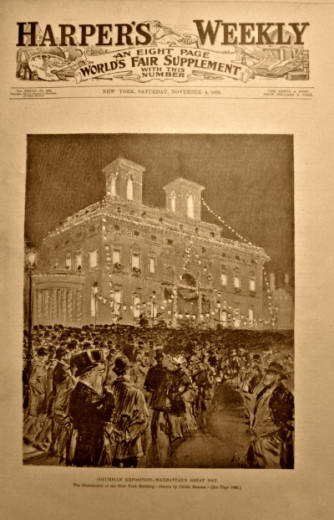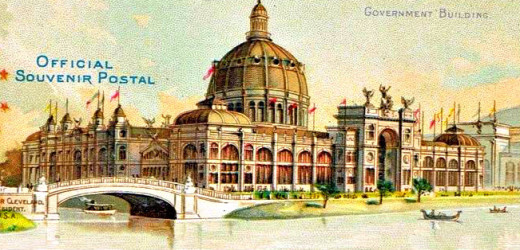Read an excerpt from this article below. You can download the full article by using the link at the end of the excerpt.
 … Architect Daniel Hudson Burnham, Director of Works for the Chicago World’s Fair of 1893 (The World’s Columbian Exposition), undertook to realize the first city-scale unified design of buildings, pedestrian plazas and public monuments in America. Painted all in white, this “Great White City” thrilled visitors with its beauty, cleanliness and order. It initiated the City Beautiful Movement in the United States and catapulted Burnham into leadership of the newly emerging city planning profession.
… Architect Daniel Hudson Burnham, Director of Works for the Chicago World’s Fair of 1893 (The World’s Columbian Exposition), undertook to realize the first city-scale unified design of buildings, pedestrian plazas and public monuments in America. Painted all in white, this “Great White City” thrilled visitors with its beauty, cleanliness and order. It initiated the City Beautiful Movement in the United States and catapulted Burnham into leadership of the newly emerging city planning profession.
Thousands of visitors left Chicago with the belief that things could be made better back home. They began to organize local groups to plan for a visually and functionally unified new “civic center,” for metropolitan park systems and tree-lined boulevards with coordinated public benches, street lights and transit stations. They sought to realize architecturally integrated streets through laws regulating building heights and setting building setback lines.
Led by major businessmen, unofficial City Plan Committees undertook to raise the quality of the public environment to make physical America a fitting subject for public-spirited support and patriotic respect, capable of inspiring both the ambitions of youth and the visions of the industrious. The idea of America would take positive physical form through the effort of community planning commissions; it would be realized in community actions directed toward shaping and protecting the public environment.
When the first official, permanent and local American planning commission was created at Hartford, Connecticut in 1907, the aesthetic purposes of community planning — realizing an inspiring good order in the public environment while protecting the positive qualities of both the natural environment and the cultural heritage — were clearly dominant forces in the emerging community planning movement. …
End of excerpt
You must be logged in or a PlannersWeb member to download this PDF.
